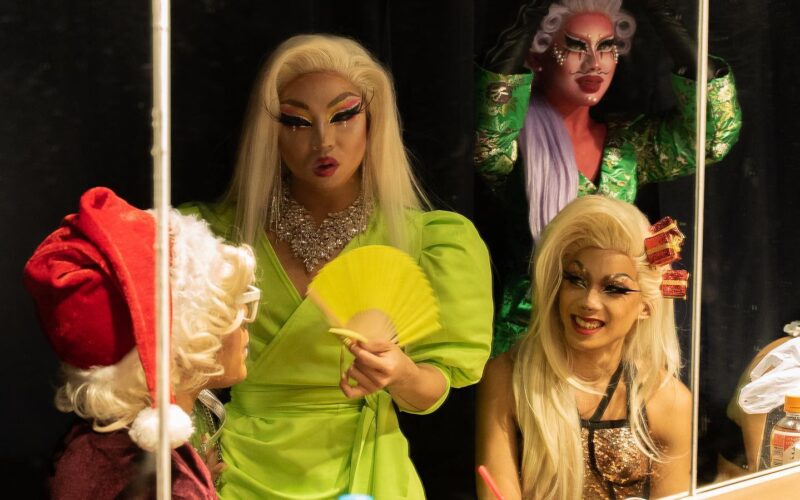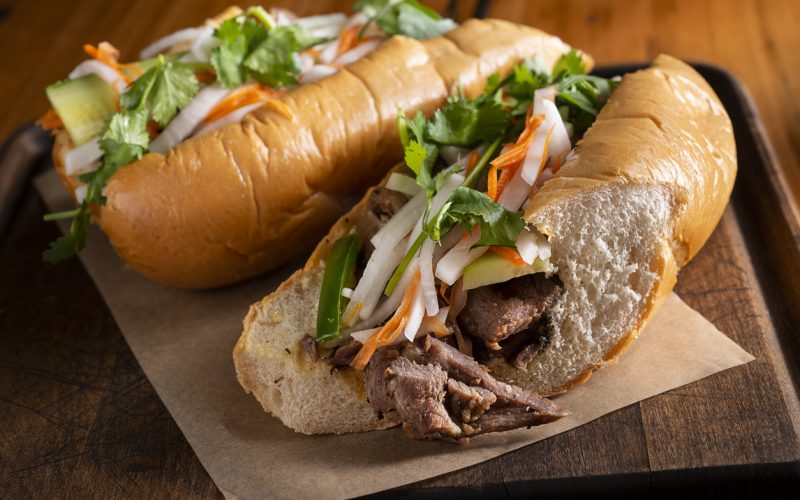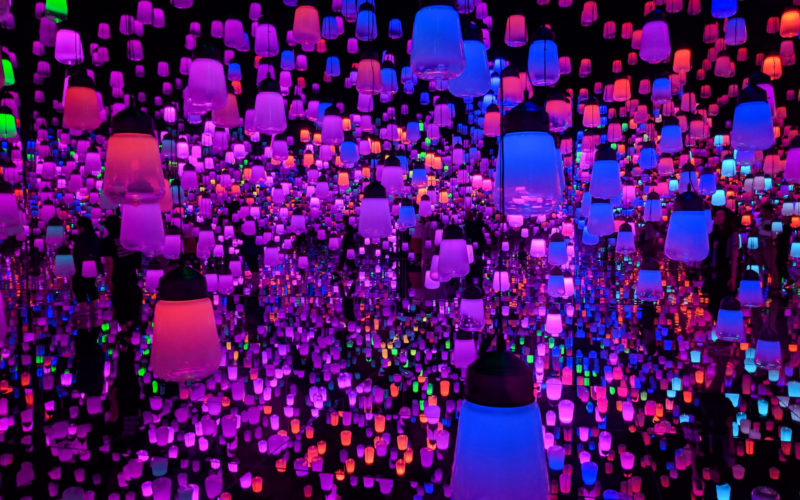Ryogoku
You vs heavyweight traditional heritage in the sumo center of the world.
The spiritual and physical home of sumo, Ryogoku is where centuries of Japanese tradition continue to live and breathe right in the whirl of modern Tokyo. Spend time snapping artistically incongruous photos of kimono-clad sumo wrestlers playing Tsum Tsum on their iPhones, or wrinkled grandmother’s selling tofu for chanko-nabe outside of the 7/11.
Situated between historic Asakusa and the symbol of future Tokyo, the Skytree, Ryogoku is past and future Tokyo bracing for a grudge match in the sumo wrestling ring – the question is, who will win?
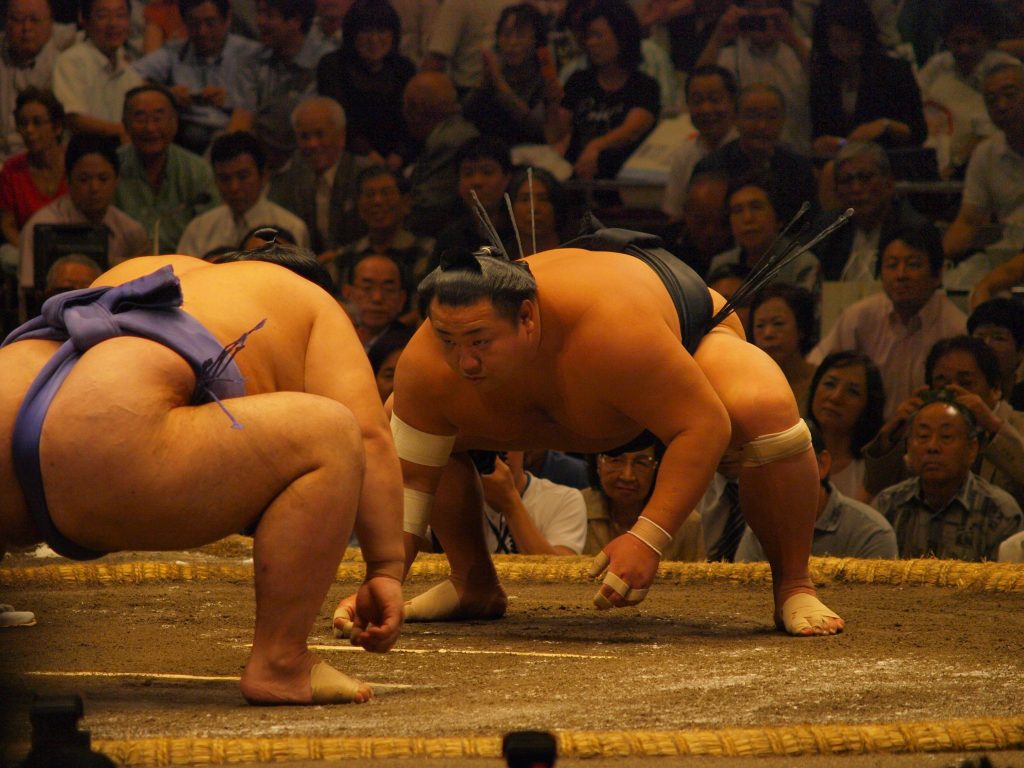
Photo by: Hatch.m Watching sumo is a sport in itself with tournaments lasting from 8:30 a.m. until 6 p.m. daily. Photo by hatch.m.
How to Watch Sumo at Ryougoku Kokugikan
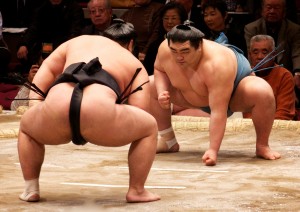
With its large copper roof, the Ryogoku Kokugikan dominates the district’s skyline. There’s an interesting museum open year-round but the best time to visit is undoubtedly when the stadium plays host to an epic 15-day showcase of some of the world’s most powerful athletes in blink-and-you’ll-miss-it clashes of brute force.
Don’t worry too much about the matches though, tournaments are almost more fun for watching Japan’s elite (geishas in tow) mingle among ringside seats while you soak in the thrilling atmosphere from the upper rows with a beer and bento.
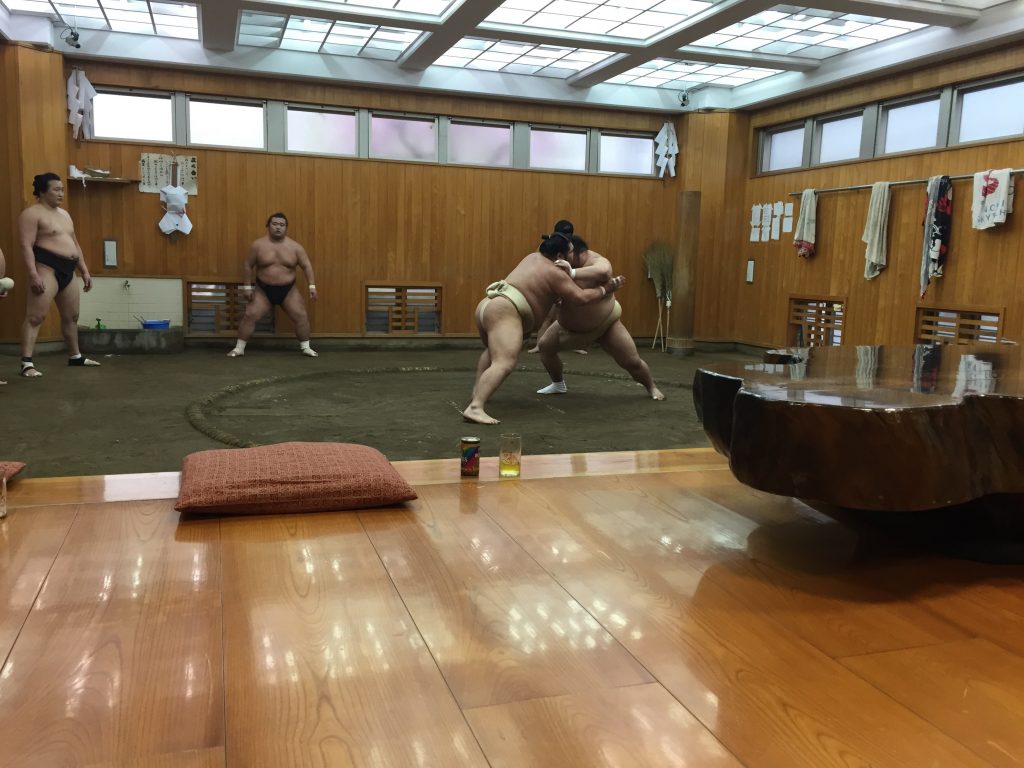
Experience sumo up close and personal by sitting in on a morning training session.
The tournament takes place in Tokyo in January, May and September, and travels around Japan for three other tournaments during the rest of the year. Outside of the season, it’s still possible to glimpse history in motion at a sumo morning training session in one of the sumo stables (houses where sumo wrestlers train and live) in the area. It’s a rare insight into the mysterious world of sumo and a fascinating cultural experience.
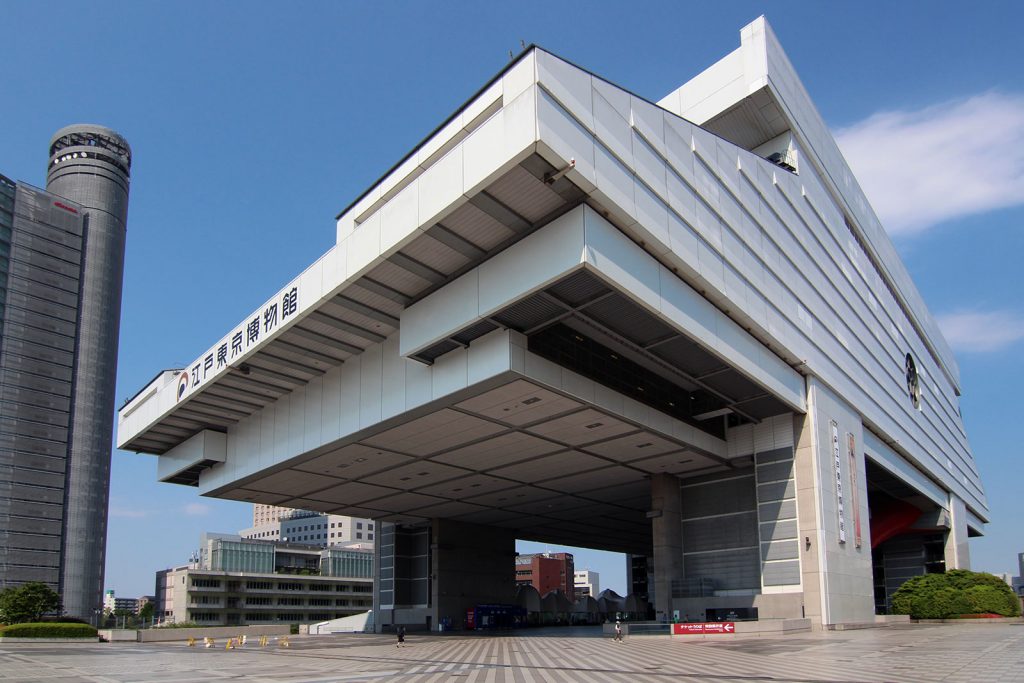
Journey into Tokyo’s past, present and future at the Edo-Tokyo Museum.
Just next door, the Edo-Tokyo Museum offers a comprehensive and interactive journey into Tokyo’s past all the way to the present and future. This is one of the country’s top museums, with over 2,500 items on display from traditional toilets to transport. There are also a number of smaller museums spread around town showcasing local crafts and culture.
You can’t skip sumo town without trying a wrestler’s traditional dish of chanko-nabe, an enormous hot-pot filled with meat, dumplings and vegetables that rikishi eat in eye-popping amounts to gain weight. Chanko-nabe restaurants are easy to find in the area (being everywhere you look) and many are actually run by former wrestlers.
Trivia

How to Watch Sumo at Ryougoku Kokugikan
When I used to hear the word "sumo," I always pictured giant men in cotton thongs. Then, I moved to Japan and went to a real Sumo tournament at Ryougoku Kokugikan in Tokyo, and my opinion was never the same.
MoreTopics: autumn, Budget, high-end, Local, Ryogoku, spring, Sumo, tokyo neighborhoods
